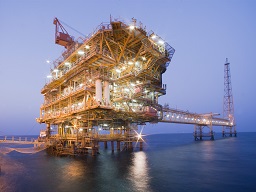Gas Dispersion and Accumulation Studies
Spadeadam has extensive facilities enabling the controlled release of pressurised gas (or volatile liquids, such as LNG) into the atmosphere or into enclosures for studies to help specify preventitive measures or hazard ranges.
Gas Build Up in Enclosures
For reasons of weather protection, compliance with planning regulations or noise reduction is sometimes necessary to house gas processing plant within enclosures, leading to the potential for gas accumulation and an explosion risk.
Experimental tests can help to provide information to understand the gas accumulation process and the effectiveness of different ventilation regimes (mechanical or natural). Enclosures can be designed and built to suit the particular situation to be studied and gas concentrations measured using a range of instrumentation, including direct sampling or intrinsically safe detectors providing continuous measurement of gas levels throughout the enclosure.
The full scale test rig representing an offshore module (see Gas Cloud Explosions) also provides the opportunity to study major gas releases at high pressure with monitoring of gas concentrations throughout the test facility with continuous on-line measurement at typically 200 locations. Gas releases up to 20kg/s and 50bar are possible with flow controlled and measured in accordance with European and International standards.
Gas Dispersion in the Atmosphere
The high pressure storage and pipework system at Spadeadam enables controlled releases of pressurized gas from a geometry designed to suit the customers’ requirements, including from above or below ground pipework.
Other vessels allow volatile flammable liquids, such as LNG, LPG etc to be released under pressure to form dispersing dense gas clouds. Instrumentation deployed on suitable supports can provide measurements of gas concentration in the dispersing cloud. Measurements of the fuel release rate and meteorological conditions would also be made.


